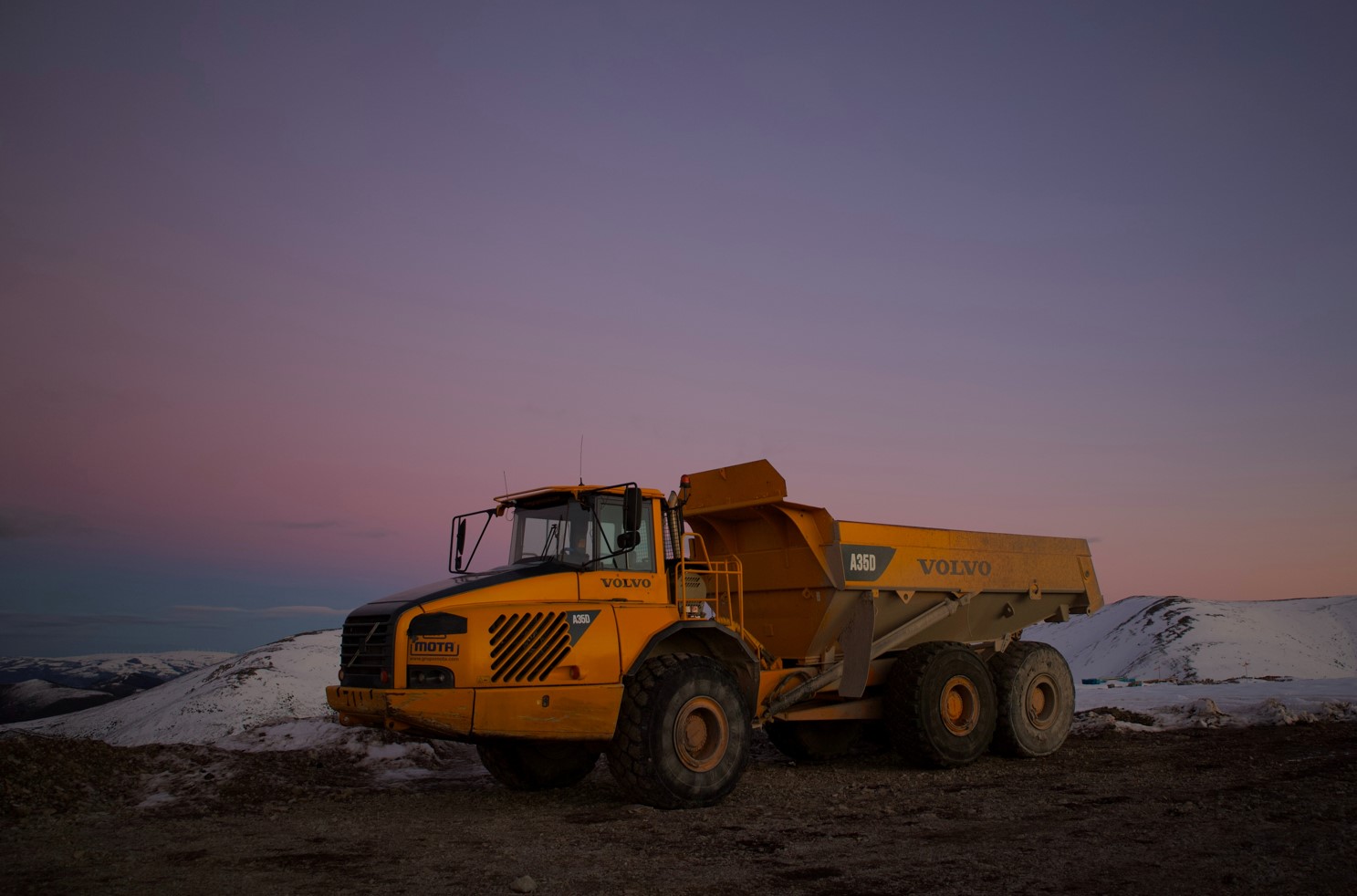
During these unprecedented times, mining operators are learning to navigate through many challenges because of the COVID-19 pandemic. Last year, mining operators pursued resiliency, investor confidence, environmental, social, and governance (ESG) performance, and capital and operational discipline. Moving forward in 2022, these megatrends will still be relevant to the mining industry with some added complexities that were discovered in 2021. ADI Analytics has been tracking the state of the mining industry and its commodities of interest for the past year and has identified the following trends and themes that will further impact mining and metals in 2022.
- Rising capital intensity will result from higher inflation rates and increased growth ambition
Over the past year and a half, inflationary pressures have been growing for the mining industry resulting in higher production costs, with unit costs expected to rise anywhere between 5% and 10% in 2022. Consequently, mining operators will continue improving their financial performance by reducing maintenance costs, increasing mining equipment productivity, and implementing digital technologies for better mining efficiency. This year’s anticipated increase in capital expenditures will also make up for underspending in 2020 and 2021 due to the supply chain bottlenecks caused by the pandemic. However, major mining companies will most likely proceed with these investments conservatively. Fiscal uncertainty in key mining regions will contain the level of investments made by major miners.
Apart from inflationary pressures encouraging better financial performance, higher capital expenditures are motivated by the industry’s growing ambition in ‘green’ metals, the focus of ADI’s multi-client study on critical minerals, and by emissions abatement capital expenditures. Brownfield projects, greenfield projects, and M&A opportunities have been openly discussed by mining majors to expand in ‘green’ mining. Decarbonization efforts and ESG pressures will continue to drive investments, with companies such as ArcelorMittal, Slazgitter, and Voestalpine committing to CO2 targets to reduce Scope 1 and Scope 2 emissions over the next five to ten years. Miners that have advanced growth pipelines or well-positioned portfolios, such as Glencore and Anglo American, will be in stronger positions and should face less upward pressure on capital expenditures in 2022.
- Base metals demand will be driven by green policies
Prices of several major industrial metals heavily used by the electric vehicle (EV) industry such as copper, aluminum, and precious metals have risen due to supply-side issues and container shortages. However, prices are expected to stabilize during the first half of 2022 as supply constraints related to the pandemic counteract tapering industrial activity in China. Policies were made to encourage the production of industrial metals in China as a response to the growing demand from the EV market and other emerging sectors. Despite market volatility, the price sub-index for base metals is estimated to increase by 4.5% in 2022, after surging by 48% in 2021.
- Global aluminum markets will remain tight in 2022 because of drawbacks in China and Guinea
Primary aluminum production in China requires a lot of power from burning coal. Aligned with China’s carbon-neutral 2060 targets, new rules were introduced last year to control coal pricing. Coal pricing has more than tripled within a twelve-month span ending in October 2021 and, consequently, power companies started to ration supplies and cut down power output. Due to these high coal prices, aluminum production lowered, and the price of aluminum rose to record-high levels. Three months after the announcement of these coal pricing controls, coal prices declined, which relieved some of the pressure out of the Chinese aluminum supply chain. However, by historical standards, coal prices have remained relatively high and an increase in Chinese primary aluminum output is unlikely in 2022.
Compared to other metals, global primary aluminum production has not been constrained by shortages of its raw materials. From January 2021 to July 2021, global alumina production increased by 6.5% and it continued to trend higher. However, the military coup that occurred in Guinea early past September grew concerns about unexpected disruptions in the supply chain and the cost of consequently increased. Contrary to popular belief, no disruptions in mine production and shipments out of Guinea were reported months after the coup, and alumina prices have fallen since.
Deficits of 558,000 metric tons in 2022 and 952,000 metric tons in 2023 are expected and reflect the growing constraints on aluminum production relative to Chinese aluminum demand. Markets outside of China are expected to remain relatively tight in 2022 because of the lack of near-term supply growth projects outside of China.
- Global copper supply will rebound in 2022 but will remain in a deficit
In 2020, the refined copper market was estimated to have a deficit of approximately 900,000 metric tons exacerbated by the slump in industrial activity and consumption because of the coronavirus pandemic. However, mine production rebounded strongly in countries such as Peru during 2021. After dropping by 12.6% in 2020, Peru’s copper mine production increased last year despite high infection rates and a slow vaccine rollout. Some projects have already been planned for 2022 such as the expansion of the Toromocho mine and the Mina Justa project, which is expected to ramp up its copper output by 110,000 metric tons by the end of 2022. Additionally, Anglo American and Mitsubishi Corporation announced a joint venture to develop the Quellaveco mine with a capacity of 300,000 metric tons per year. They expect to start the project this year.
Chile is remaining proactive in its attempts to increase annual copper production to 7,000,000 metric tons by 2030. Juan Carlos Jobet, the energy and mining minister of Chile, announced a new national mining blueprint this past September to reach Chile’s copper production goals. Projects that will increase Chile’s copper capacity include BHP’s Spence copper mine expansion, valued at $2.5 billion dollars. Costing $5 billion dollars, the Quebrada Blanca Phase 2 project planned by Teck Resources aims to extend the mine’s life by more than 25 years and is scheduled to start in the second half of 2022.
Apart from Peru and Chile, the Kamoa-Kakula project in the Democratic Republic of the Congo, owned by Canada-based Ivanhoe Mines, is the largest copper mine to begin its operations this past May and it will ramp up its capacity to 300,000 metric tons per year by the end of 2022. It has been reported that Chinese mining operators are interested in Afghanistan’s vast mineral reserves ever since the United States has withdrawn its military in Afghanistan, but no definitive plans have been made since. Resource nationalism and stricter environmental oversight are likely to persist in the long term, which raises concerns that these new mine projects and planned smelter expansions will be insufficient to meet the rising demand of the future.
- Decarbonization will gain sharper focus for the mining industry
Many mining companies have been making strides toward decarbonization as external pressures to reduce greenhouse gas emissions and electrification efforts grow. In the past, BHP, Anglo American, and Antofagasta Minerals have announced plans to power their operations entirely from renewable energy. Vale also committed to achieving 100% self-production from renewable resources by 2025 in Brazil and by 2030 globally. However, most of the focus when it comes to emissions from the mining industry is directed towards Scope 3 emissions. Associations such as the Australian Climate Leaders Coalition, the European Corporate Leaders Groups, the New Zealand Climate Leaders Coalition, and the We Mean Business Coalition, are acting to accelerate low-emission or zero-carbon economies.
- As global economies recover, industrial raw material prices will rise in 2022
After surging by approximately 40% in 2021, the industrial raw materials price index is forecast to increase by 4% in 2022. Base metals and crude oil drove price increases in 2021, and prices are projected to increase as countries recover from supply chain constraints from the spread of COVID-19 and the Delta variant, especially in Asia. These constraints are expected to further ease by the second half of 2022, removing some of the pressure on industrial raw material prices. In 2023, the industrial raw material price index is expected to fall by approximately 2%, driven by a 10% fall in crude oil prices.
- Battery metals supply will continue to lag behind and will support higher prices for longer
Electric vehicle penetration rates are increasing and are expected to be the largest driver for demand growth for lithium and rare earth metals in 2022. Thus, lithium and rare earth metals will continue to be in a market deficit. Consumers are showing more interest in environmentally friendly company profiles or local supply sources outside of China. The market deficits and the consumers’ desire for more sustainably sourced lithium and rare earth metals supply will support higher prices this year. Companies such as Lithium Americas Corp and Piedmont Lithium are seeking partners to fund their projects, specifically the Thacker Pass and North Carolina project, respectively. MP Materials announced its plans to build a rare earth alloy and magnets facility in Texas as a long-term supply agreement with General Motors.
- China’s carbon neutrality targets will support nickel demand in 2022
Strong fiscal measures will support China’s GDP growth in 2022, but a slower pace in investment growth due to recent policies that are aimed to reduce carbon emissions will cause China’s real GDP growth to moderate to 5.3% in 2022. Due to the strong fiscal stimulus in infrastructure, Chinese nickel demand will rise at approximately 3% this year. In addition, nickel demand will be driven by the growth in new energy vehicles (NEVs)as subsidies and incentives will continue to be granted by the Chinese government. These incentives are a part of China’s goal to become carbon neutral by 2060, and advancements in electric vehicles and battery technology will mitigate the slow-growing or even falling nickel demand from the Chinese steel industry. Crude steel production dropped sharply last October due to energy and emissions restrictions. Steel production was also impacted by China’s property sector amid increased debt default.
South Korea and Japan are expected to rebound in economic activity and will also support a recovery in nickel demand in 2022. However, the tense geopolitical relations between the United States and China still exist. Consequently, the global refined nickel production is projected to grow by 5% this year compared to 6.3% last year. Nickel prices have yet to reach levels that would incentivize more nickel production despite the excitement around the EV revolution but will increase modestly in 2022.
The growth in nickel supply could be explained by many projects that were executed in 2021. Sumitomo Corporation planned to restart operations at the Ambatovy nickel mine in Madagascar during the first quarter of 2021. This past April, Mincor Resources began work to restart the Cassini nickel mine in Western Australia.
Other projects that are in the pipeline for the upcoming years include the Tamarack Nickel Project, which will be completed by Talon Metals and Rio Tinto in a joint venture. Canada Nickel has also announced plans to develop its Crawford project in Ontario, Canada. Kabanga Nickel entered an agreement with the Tanzanian government to develop the Kabanga deposit, the largest development-ready nickel sulphide deposit in the world. These projects are expected to introduce substantial supply, but last year’s suspended operations will slightly dampen its growth rate.
- Steel consumption in the United States will have a strong recovery in 2022
The United States accounts for three-quarters of the North American steel consumption as the world’s third-largest steel market, with about 30% used in the automotive industry and 45% used in construction. In 2020, construction was the leading consumer sector of U.S. steel as homes appreciated and low interest rates attracted homebuyers. On the contrary, the automotive industry demanded less steel in 2020 as manufacturing facilities halted operations and complied with COVID-19 restrictions. Other manufacturing industries were also impacted by the pandemic, and U.S. steel consumption fell by 18% year on year in 2020.
In 2021, U.S. steel demand rebounded with fiscal policy support and huge monetary policy stimulus. This past March, Congress passed the American Rescue Plan Act, which included income transfers that support consumer spending. The Infrastructure Bill was also passed in November, which will provide about $550 million dollars towards national public works projects over the next five years. As a result, projects to build bridges, roads, ports, railways, and other infrastructure are expected to increase this year. The U.S. economy will also be supported by the successful rollout of COVID-19 vaccines, allowing labor forces to become more resilient during the pandemic.
- Progress to integrate operations will continue in 2022
Over the past decade, the mining industry has built the foundation of integrated operations to improve operations and ensure the best decision-making process for its stakeholders. There are many ways mining operators could accelerate their technology for better integration, such as: implementing automation and digitalization to their operations, creating nerve centers to consolidate data from the entire value chain, and intelligent enterprise to refine support processes. Integrated operations allow companies to deliver improved decision-making through data analytics, enable remote management of resources, and streamline workforce allocation. The discussion of integration is not new to the mining industry, but more mining operators have been highlighting it as a priority.
For example, Vale introduced their Digital Transformation program, which evaluates tools available in the market that aim to deliver more sustainable results. BHP’s maintenance and innovation team developed Dash Maintainer Tools that allow front-line personnel to collect real-time data from their operations remotely. Rio Tinto is aiming to build the world’s first “intelligent mine” in their Koodaideri project where all assets are networked together to make decisions in milliseconds.
Some of the key technologies that could further transform mining operations in 2022 include blockchain, artificial intelligence, and big data. These technologies will shift mining from a people-oriented operation to a process-oriented one, which will consequently provide a better level of accuracy, improve the health and safety conditions for mineworkers, and expedite decision-making processes.
ADI Analytics will continue to monitor and track these megatrends and provide valuable insights to our clients in the mining industry. You may access our insights by subscribing to the ADI newsletter. Contact us to learn more about our research in the mining industry and to see how we can be of assistance.
By Jacqueline Unzueta





















